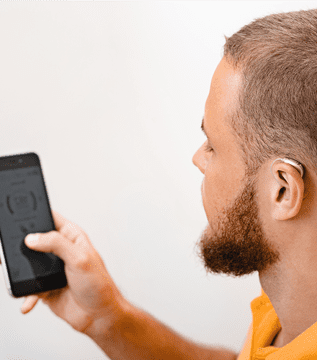
Article
How Design Can Improve Ratings for Medical Device Apps
This post was previously on the Pathfinder Software site. Pathfinder Software changed its name to Orthogonal in 2016. Read more.

We know intuitively designing for a touch interface is different than a mouse driven interface. But why are they different? Let’s wrap a little bit of science around these two worlds.
Both interfaces, tap or click, use the same three basic cognitive functions. Seeing, locating and acting. In the mouse world, a user sees an item of interest on the screen, locates the mouse to that item and then clicks. In the touch world, the user sees an item of interest on the screen, locates a finger or some part of their hand to the item and then touches the item.
The big difference arguably comes in the last two steps. Locating with a mouse requires a translation from a movement in the horizontal plane (a table top) to the vertical plane of the screen. Locating on a touch screen is more direct, you move your hand toward what you see. Taking action (clicking) with a mouse simply involves clicking the mouse. Taking action on a touch screen involves touching the screen with a sufficient degree of precision.
Traditionally, we have been conditioned to believe that “minimizing clicks” is the way to optimize an interface. But what is a “click?” It is really the combination of seeing, locating and acting. When we view our mouse and touch worlds from this perspective, the road to optimization may not always take the same path.
Consider a simple interface that splits the screen into a left side and a right side, both of which are active for interaction. In a mouse interface, the mouse must be moved from one side to the other to locate the desired interaction. In a touch interface, each hand could potentially control a side of the screen so there is no overhead to locating. Thus, the same interface in each world carries a different amount of effort.
When designing for touch (or click), it’s important to understand user interactions in terms of seeing, locating and acting. A simple, optimal interface will be designed with regard for all three of these components of interaction.
Stay tuned for more perspectives on Designing for Touch.
Related Posts

Article
How Design Can Improve Ratings for Medical Device Apps

Article
Bluetooth Trends in Smartphones: Effects on Medical Devices

Article
Developing Cross-Platform Medical Device Apps with Flutter

Article
CBI Mobile Medical Apps Summit 2015